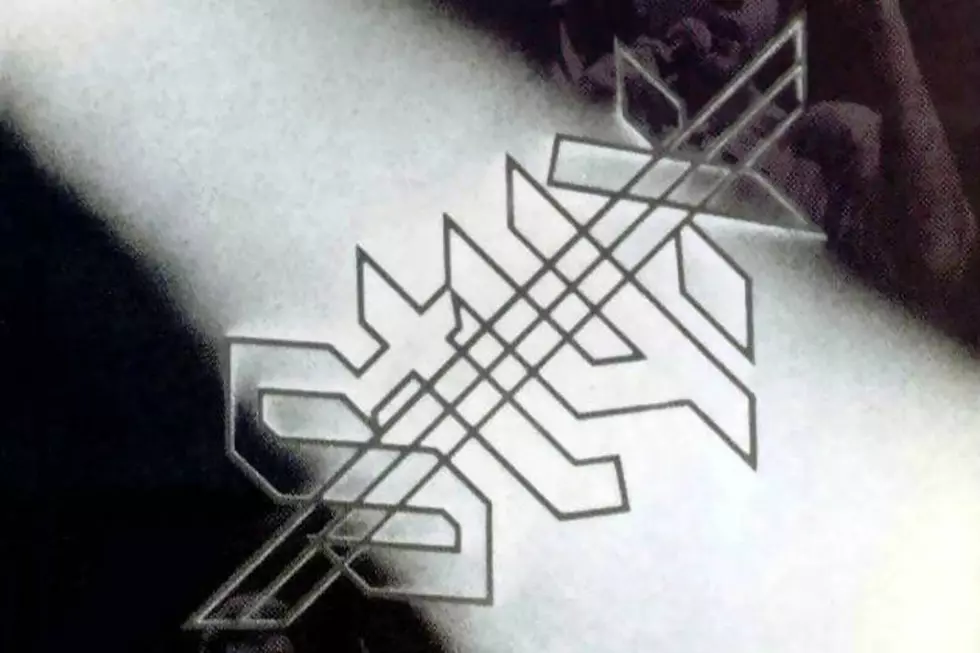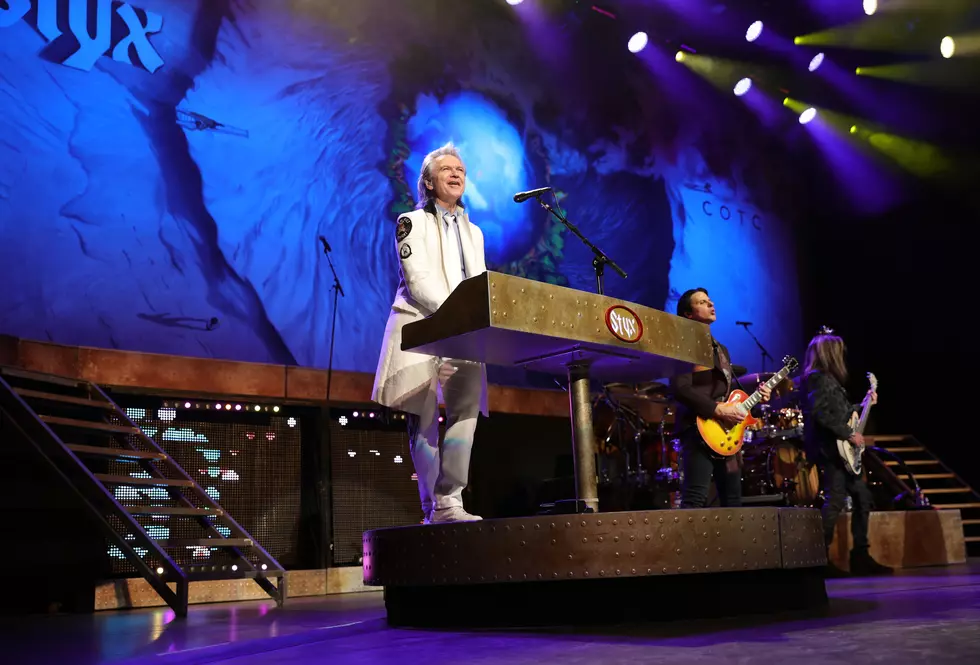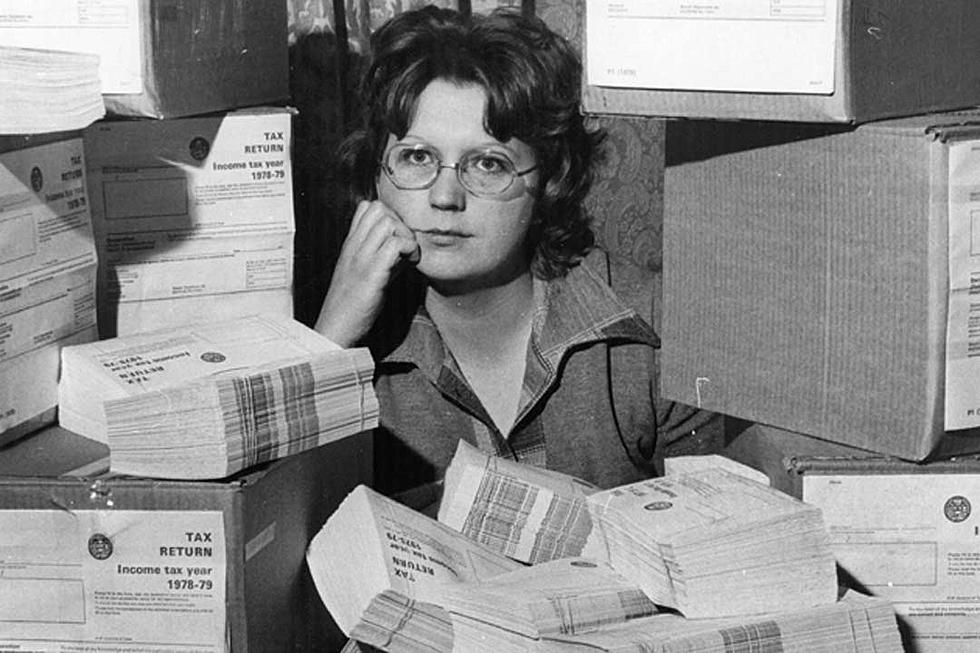
40 Years Ago: Why Styx Stumbled Toward ‘Caught in the Act’
Styx boasted a string of multi-platinum albums and a growing collection of hit singles into the the early '80s, but it was all about to come to a screeching halt.
As is often the case with creative partnerships, the band's biggest problem was also its greatest strength: namely, the tension between frontman Dennis DeYoung and guitarists Tommy Shaw and James "J.Y." Young. Where Shaw and Young preferred to keep the Styx sound grounded in the group's rock roots, they couldn't argue with the success sparked by DeYoung's pop melodies and epic song structure – for a while, anyway.
The breaking point arrived in the form of 1983's Kilroy Was Here, a concept album about a futuristic society where rock 'n' roll has been smothered by morality-driven censorship. Inspired by the accusations of backmasking that dogged Styx after the release of 1981's "Snowblind," the record certainly didn't lack ambition, and it was a commercial success. Still, its theatrical overtones bothered other members of the band, particularly during the expensive and intricate tour that followed.
READ MORE: The Best Tommy Shaw Styx Songs
"We went out and tried to do something different," recalled DeYoung, who'd been the main architect behind the Kilroy album. "And we put on this theatrical production. It was something I thought needed to be said about the coming mood of censorship in this country. I don't regret it; the only thing I do regret is that the band folded after that record, because I think we could have certainly gone on very easily."
"Folding" is a good way to describe what happened during the Kilroy tour. Rather than splitting up and making a clean break, the group limped along after suffering through Shaw's abrupt defection, sticking together as a band – albeit basically in name only – long enough to record a new song, "Music Time," for Caught in the Act, a contract-fulfilling double live LP culled from performances during the Kilroy tour.
Listen to Styx Perform 'Fooling Yourself'
Tommy Shaw Quits Styx
"In 1983, Tommy decided that he didn't like – well, he didn't like a lot of things," DeYoung told Melodic Rock. "But the No. 1 thing he didn't like was he was convinced he could be a solo artist on his own. Someone was whispering in his ear. He quit the band in the middle of the '83 tour."
Shaw made no secret of his displeasure, noting in a 1985 interview with Rock Magazine that "everything was supposed to be okay, and it wasn’t. Here I was, playing in front of thousands of people and making lots of money, yet it was the first time in 20 years that I didn’t enjoy playing. It was enough to make me doubt my sanity a couple of times."
Shaw's departure was an undeniable loss, but one DeYoung said Styx saw coming. "We knew he was going to quit. When the whole thing was over at the end of '83 and the beginning of '84, Tommy had quit and James Young, John and Chuck were still in the band. They wanted me to replace Tommy Shaw and to go forward immediately. I said I wouldn't do it. I said 'This band is these guys.'"
Released in April 1984, Caught in the Act offered fans what would be their last opportunity to hear – and, in the accompanying VHS video, watch – "these guys" playing together for some 11 years. At the time, it seemed like a triumphant look back at nearly a decade of chart success, but behind the scenes, the album's release was more of a frantic effort to hit the pause button during a time when Styx was crumbling.
In fact, as DeYoung remembers it now, not only was Caught in the Act an exercise in contract fulfillment, his own solo career started as nothing more than a holding pattern between Styx records. "I became a reluctant solo artist because I was not going to go back and put a new Styx together with somebody else," he told Melodic Rock. "My contract read that I had the ability to make a solo record for A&M, so I decided I'd make a solo album and wait for Tommy to come to his senses."
Listen to Styx Perform 'Don't Let It End'
Solo Projects Fail to Connect
As the dust settled for Styx, fans reaped the short-term benefits of the band members' discord: In 1984, a bumper crop of new music from the group's splintering ranks was released, with Caught in the Act breaking Billboard's Top 40 in the spring, DeYoung's Desert Moon following suit in late summer and Shaw bringing up the rear with his solo debut, Girls With Guns, in October. (Young joined the crowd the following year with City Slicker, a duo project with Jan Hammer.)
It all added up to more music, but without the other members around to strike sparks against, each of Styx's solo artists struggled to establish consistent solo momentum. The band's fans followed along to a certain extent, but what most listeners really wanted was a reunion. "We sold more than 20 million albums, and nothing is forever, but I don't feel that the group is finished," Young told the Chicago Tribune in January 1986. "Everybody needs breathing room now, but I feel that we will be back together. I don't think it's a question of if; it's more a question of when."
That question was answered, in part, with 1990's Edge of the Century, a partial reunion record that found guitarist Glen Burtnik subbing in for Shaw, who'd sealed up his next gig with Damn Yankees. By 1995, Burtnik was out and Shaw was back in – but then in 1999, DeYoung was ousted in a disagreement he claimed stemmed from health issues that prevented him from touring.
This time, the split seemed permanent – and at least partially rooted in the issues that drove Styx apart way back when Caught in the Act came out. Dismissing another reunion with DeYoung as not "realistic," Shaw later said Styx "tried it in 1996 and we realized what was true in 1983 was only more true in 1996. We’d just gone our separate ways. Rather than having a positive effect on each other, we have a very negative effect on each other. You only live once and you should be happy."
Meet the New Boss: Rock's Replacement Singers
Gallery Credit: Nick DeRiso
Real-Life ‘Spinal Tap’ Stories: Styx
More From KOOL 101.7










